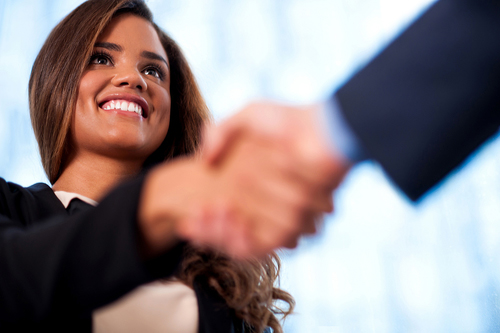
Body language cues
Why are some people so compelling, persuasive, or magnetic to talk to? Sometimes it’s because they are subject experts or have a way with words; but often, they have mastered the art of what is frequently described as being “comfortable in one’s own skin.”
Communicating well isn’t just about what we say, it’s also our nonverbal communication cues: our body language, how we hold ourselves as we talk, our facial expression, our stance, our posture, what we do with our hands, and the distance we keep between ourselves and other people.
Being successful in our communications with others is important on the job, but it is also important with our family, our friends, and in our everyday interactions. You can achieve better results by being more conscious of your presence and the nonverbal signals you give out when you communicate. Experts suggest the following:
Open yourself up.
Power poses are when people make themselves bigger. They expand in their posture, their gestures and they open themselves outward. In contrast, people who make themselves smaller by wrapping themselves, slouching or folding themselves inward appear less confident.
Focus on the person you are conversing with.
Use “I’m interested” signals by keeping eye contact, facing towards the person, leaning in and nodding. Eye contact makes a connection. Mirror the pace, tone, urgency of who you are talking with.
Pace yourself.
Relax, slow down, listen and focus on your breathing.

Master a good handshake.
Touch is important and makes a human connection. A slight reassuring pat on the back or arm can be good, too, but be careful not to be too “touchy.”
Smile.
Like yawning, smiling is almost always contagious. Make sure your smile is appropriate to the conversation and topic.
Use your hands.
Practice using expansive gestures to punctuate your points.
Eliminate distracting, nervous body “tics.”
Be aware of and stop things like touching your face or hair, playing with jewelry or pens, scratching, rubbing eyes, slight rocking, jittery knees or foot tapping.
Learn from others.
Watch confident, relaxed people and note how they hold themselves, how they communicate, what they do with their hands, and their facial expression. Borrow the best practices.
Fake it ’til you make it yours.
Body language expert Amy Cuddy says that practicing power poses and verbal communication cues in advance can make you more successful, even if it feels awkward at first.
Get more tips by logging in to www.theEAP.com and searching for “communication”.
1.800.252.4555 or 1.800.225.2527
View more newsletters at www.theEAP.com
